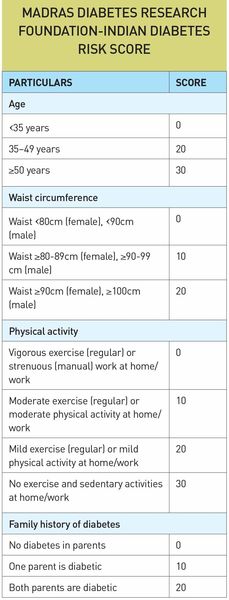
Interview/ Dr V. Mohan, chairman and chief of diabetology, Dr. Mohan’s Diabetes Specialities Centre, a World Health Organisation collaborating centre for noncommunicable diseases prevention and control and an Indian Diabetic Federation centre of education, Chennai
Even though the incidence of heart and vascular disease is high in diabetics, most patients are not counselled on their risks and prevention. Why?
Although that is true, it is changing rapidly; particularly in specialised diabetes centres where regular education programmes are conducted to teach patients that diabetes is not just a metabolic disease but a metabolic-cum-vascular disorder which affects the eyes, kidney, heart, feet and nerves. Most international diabetes societies have made a yearly screening for all these organs mandatory. Getting this message across to millions of patients still remains a challenge, but we should make every attempt to spread awareness about the long-term morbidity and mortality associated with vascular disease, particularly heart disease, among all diabetes patients.
Most diabetics in India are unable to meet their glucose targets. What needs to change for better compliance?
More education is what is needed. Studies show that those who go for follow-up check-ups at least three times a year had much lower rates of all vascular complications compared to those who did not. Hence, it is very important to emphasise the importance of compliance and regular follow-ups at the clinic.
Even among patients whose glucose is under control, the risk for heart disease is high because of hypertension, high cholesterol, obesity and sedentary lifestyle. What approach should be adopted for overall control of all these factors?
To prevent microvascular complications, eye, kidney and nerve, blood glucose control alone with HbA1c below 7 per cent should be sufficient. However, for prevention of heart disease, we need a multi-pronged approach, where apart from controlling glucose levels, it is necessary to keep blood pressure and lipid profile—serum, cholesterol and triglycerides—under control. In addition, regular physical activity, healthy diet and reducing stress would help prevent heart disease in people with diabetes.

There are millions of pre-diabetes patients in India. What are the public health measures needed to stem the tide?
There are around 80 million people with pre-diabetes in India. Most of them have not been diagnosed because pre-diabetes can only be detected through screening, and there are no symptoms at this stage. By doing an Oral Glucose Tolerance test (OGT) in patients—Impaired Fasting Glucose (IFG) as well as Impaired Glucose Tolerance (IGT)—the two forms of pre-diabetes can be picked up. We have devised a simple risk score, called the Madras Diabetes Research Foundation-Indian Diabetes Risk Score, which only has three questions and a waist measurement to cost-effectively pick up both patients with diabetes and pre-diabetes. The risk score is given below:
If the score is:
≥60: There is a very high risk of having diabetes. OGT test is recommended to rule out diabetes. If this is not possible, at least a random blood sugar test or a fasting blood sugar test should be done.
30-50: The risk of having diabetes is moderate. It is still recommended to have the above check-up.
‹30: The risk of having diabetes is probably low.
Note: The score applies only to type 2 diabetes.
Do you think the anti-diabetic drug empagliflozin will help in dealing with the twin risks of diabetes and heart disease?
A recent study showed that empagliflozin can have beneficial effects on preventing heart disease and also controlling diabetes. So the drug is showing great promise.
Are physicians not paying enough attention to diabetes management through lifestyle changes and nutrition, which would help patients deal with most complications?
The problem is that physicians have very little time to deal with patients. A team-care approach is needed and this is where the role of diabetes educators comes in. They will have more time to talk to patients about lifestyle changes, nutrition and physical activity, and physicians can then use their time for examining patients and prescribing necessary drugs.
Is there Indian data about the number of diabetes patients with cardiovascular risk? Any new research specifically on Indians?
It has always been known that Indians are more prone to heart disease. In the Chennai Urban Population Study (an ongoing study in two residential colonies in Chennai representing the middle and lower-income groups), we showed that the overall prevalence of heart disease is about 9 per cent in those with Normal Glucose Tolerance, 14 per cent in those with IGT tolerance and 21 per cent in those with diabetes.
So the cardiovascular disease clock starts ticking even in the IGT stage or pre-diabetes, and people with diabetes have approximately double the risk of those with normal glucose tolerance. However, by good control of glucose, blood pressure, lipids and diet, physical activity and stress reduction, the risk for heart disease can be considerably reduced even in people with diabetes.






